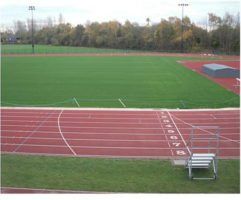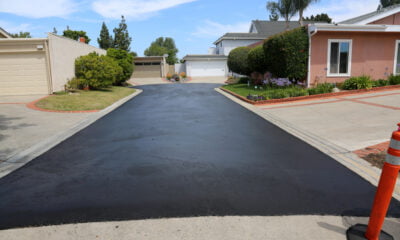

Energy
Embracing Sustainable Urban Sports Facilities
With the Summer Olympics in Rio upon us, athletics are in the spotlight across the globe – and that topic includes not just the athletes and coaches, but also the facilities where sporting events take place. For those interested in sustainability, however, the questions about the facilities tend to look different; we might wonder what kind of carbon footprint a particular stadium has or how an arena fits into the local environment.
Urban athletics facilities are often leaders in the march towards more sustainable construction, but developing more environmentally friendly recreation spaces continues to be a challenge.
So, what does the future of urban athletics look like? These four facilities can give a glimpse of the sustainable structures to come.
Going For Green Space
At first glance, it seems obvious that outdoor athletics facilities are among the most sustainable options for urban areas, particularly for those that don’t want to compromise existing green spaces by constructing a gym, but the correlation is not always that simple.
For example, basketball is one of the most popular sports in urban areas, drawing crowds to events like the All-City Classic. Basketball, however, isn’t played on grass, and while you can certainly put a court in a park, the smooth courts may contribute to run-off and erosion. In many cases, it may be more sustainable to repurpose an old building for athletic space and retain existing green spaces that support local biodiversity and urban air quality. Combining community spaces with green areas and business is the formula for sustainable development.
Self-Supporting Structures
One of the most harmful environmental effects of urban athletic spaces is their reliance on cooling systems for much of the year. Because it’s important for athletic spaces to be kept comfortable so that athletes remain healthy, this is an unavoidable cost – but that doesn’t mean we can’t make changes to offset the energy use.
A great way to make urban sports facilities more sustainable is by installing energy generating workout equipment – the most common type of which is the stationery bike. Some New York City gyms, for example, use these bikes in their popular spin classes. Each bike is equipped with a small box that works like a human-powered generator, transforming motion into electricity. These systems help reduce their reliance on external power for running air conditioning and other equipment.
Award-Winning Work
Colleges are frequently leaders when it comes to sustainable construction projects, which makes it no surprise that Tulane University’s Lavin-Bernick Center and American University of Beirut’s Charles Hostler Student Center – both projects of Vincent James Associate Architects – were recognized in 2008 and 2009 as among the “Top Ten Green Projects” by the American Institute of Architects Committee on the Environment.
The Hostler Center, in particular, features a number of athletics spaces that are made more sustainable through simple, passive processes. Light wells funnel natural light into the building from outside, solar collectors heat water for showers and the swimming pool, and naturally replenished water walls insulate the building. These solutions are vital for high-use spaces with major energy needs, like the Hostler Center.
Underground Options
When green space is at a premium and energy use levels are high, one solution that urban planners are adopting for athletic facilities lies beneath the surface – literally. Underground construction, such as that embraced by the Sidwell Friends School in Washington, D.C., allows for a kind of double use of space. In this case, the new gym is beneath the pre-existing track and football field. The underground construction also keeps the space especially cool compared to similar facilities.
Sidwell now features one of the most advanced secondary school athletic facilities in the United States, and the increased capacity allotted by the new gym means the school can host many events, providing the opportunity for sustainability proselytizing. Particularly among private urban schools, the Sidwell model could transform physical education and extracurricular facilities.
Urban areas are revolutionizing how we think about athletic facilities by employing a range of sustainable technologies, designing towards LEED certification, and placing a continued focus on the importance of green space. As sites with typically high energy needs, the solutions pioneered by athletic facilities are paving the way for a broad set of new and reengineered buildings around the world.






























